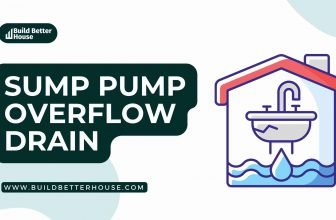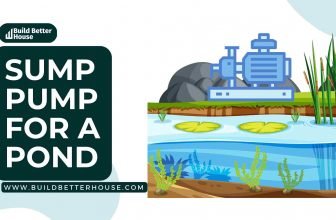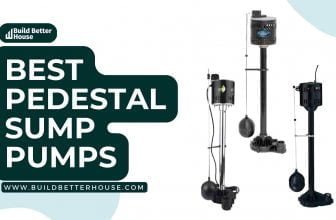What Is A Sump Pump? Everything You Need To Know
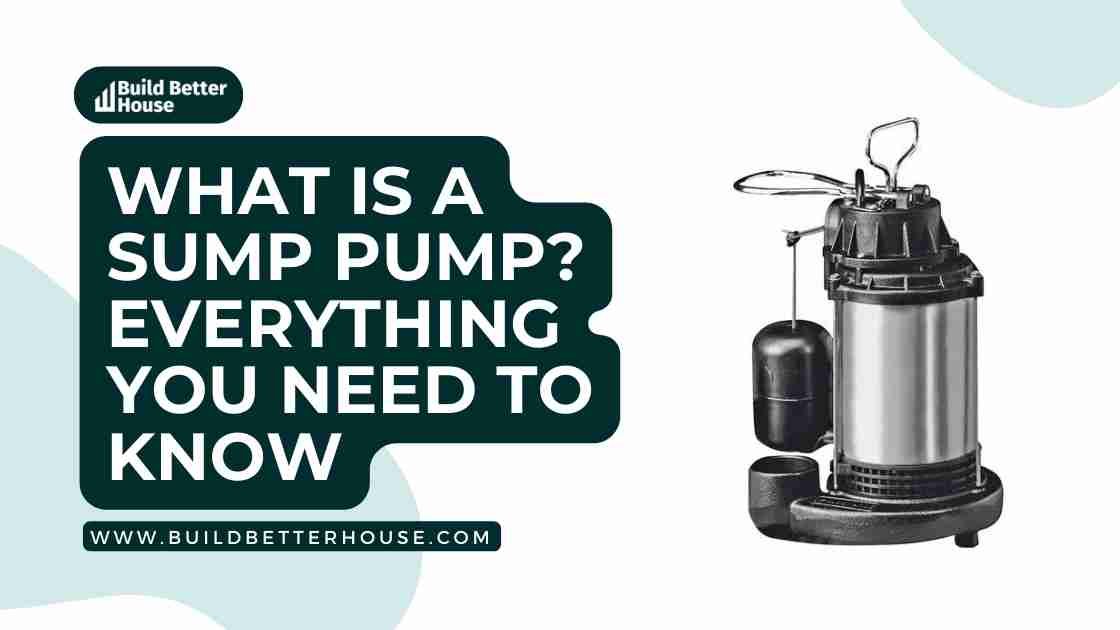
Most of us don’t know about sump pumps until we experience significant property damage and financial ruin from a flood or a severe storm.
However, you must be aware of sump pumps if you have ever had a similar concern or live in a region subject to flooding or storms because sump pumps are machines that are designed to protect our lives and homes from such awful circumstances.
This article will cover all the information you require concerning sump pumps.
What Is A Sump Pump?
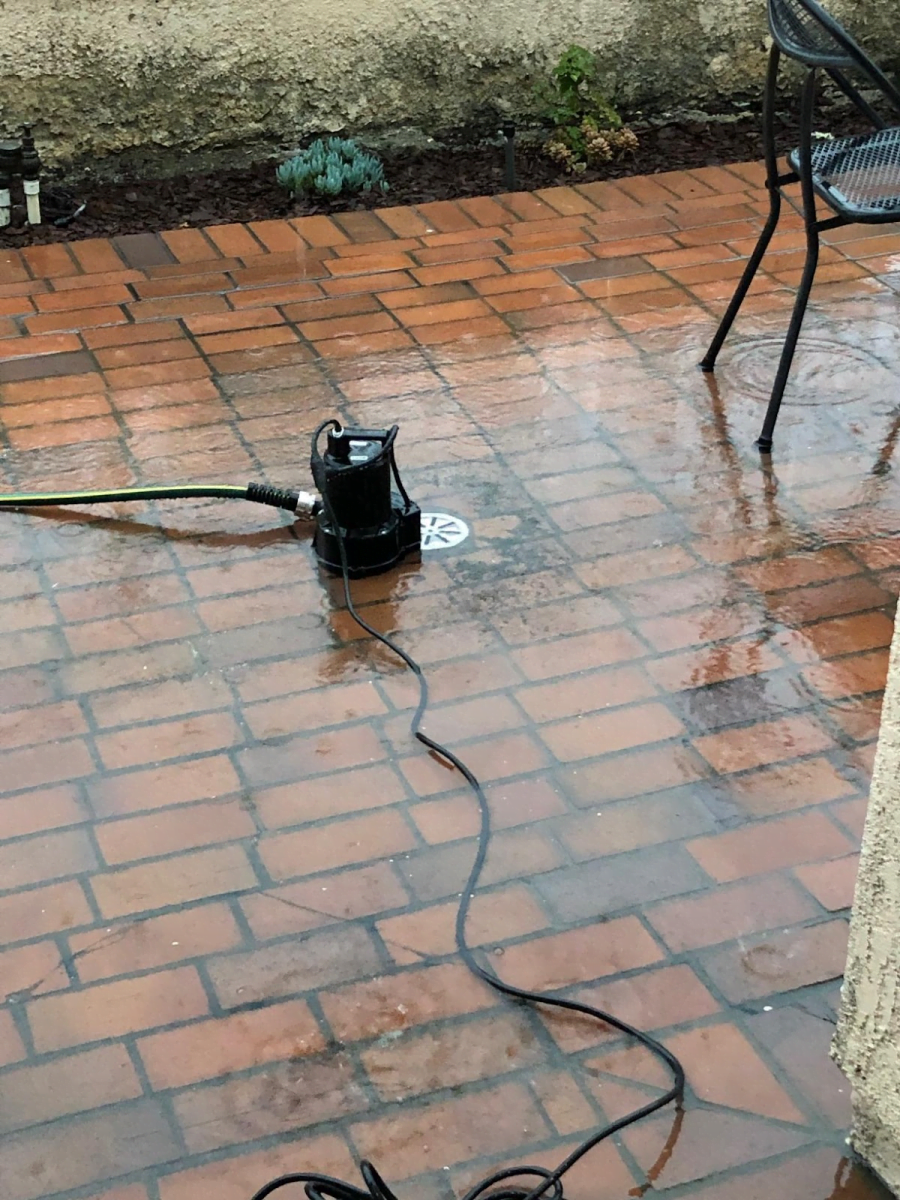
A sump pump can be a primary or a backup pump, and you should have one of both. Most of the time, primary sump pumps handle the most work. The backup sump pump will be activated if the primary pump breaks down or cannot handle the water intake.
A sump pump is often referred to as a drain or sewage pump. A sump is an organic pit, which is also called a basin. It is a carved opening on the primary surface of the basement floor.
This pump is typically used in locations with continuous overflowing basement issues and to manage the moisture issue when the water level is higher than the home foundation.
Types Of Sump Pump
A sump pump can be a primary or a backup pump, and you should have one of both. Most of the time, primary sump pumps handle the most work. The backup sump pump will be activated if the primary pump breaks down or cannot handle the water intake.
There are two main types of sump pumps: pedestal and submersible. Both types are accessible as either a primary or backup choice. It is possible to separate them using the backup sump pumps’ backup power source, whether a battery or water.
Submersible pumps
Submersible sump pumps are large equipment. They function when submerged and are located directly inside the sump pit. They operate more quietly than pedestal pumps but are typically more expensive and difficult to maintain. These sump pumps are more efficient, which makes them an excellent choice for homes that frequently flood.
A submersible pump might be useful if you live in a place with frequent severe rain or your basement floods. These pumps can remove water simultaneously since they are made with powerful motors.
Debris can also be filtered away by submersible sump pumps, preventing your system from becoming congested.
Submersible sump pumps are also less durable than other types since they are exposed to much more water and debris. The lifespan of most submersible sump pumps is only 5 to 10 years.
Pedestal pumps
Pedestal pumps are long, upright machines with the impeller or intake device at the bottom and the pump motor on top. Compared to submersible pumps, these are less expensive and simpler to reach for maintenance, but they are often considered less reliable. They are too loud because the motor is located above the sump pit.
Accessing pedestal sump pumps is much simpler. Since they remain above the pit, you can quickly access them if a repair or replacement is required. The Pedestal has a life expectancy between 25 and 30 years, which is more than twice as long as some of the most resilient submersible sumps pumps, given that it is not exposed to as much water or debris.
The pedestal sump pump is also very noisy as it isn’t placed in the ground. Expect to hear it operating, especially when it is exerting itself.
The submersible sump pump will be far more powerful than this kind of sump pump. The pedestal sump pump might not be powerful enough for people with a basement that frequently floods.
Battery-operated backup
The battery-powered backup sump pump is the most prevalent model. These do not replace the primary pump. They typically have a connection to a big battery.
The fact that it works with batteries makes it a huge lifesaver during a power outage in a storm. These submersible sump pumps are pricey, challenging to use, and short-lived due to their submerged design.
Battery-backed sump pumps also lack the same power level as other submersible sump pumps. They cannot offer as much suction power since they aren’t connected to your main electricity.
Water-powered backup
For people who frequently have power outages due to “ severe storms, the water-powered sump pump can be a fantastic solution. This sump pump will continue to operate in the case of a power cut using the municipal water source’s water pressure.
The extra water can be sucked out because of the vacuum created by the water pressure.
Since these sump pumps do not have motors or small parts, they often last a long time. You don’t have to worry about the motor going out or small parts being damaged by the water.
The backup sump pumps powered by water pressure are not electrically linked; they are driven by good old-fashioned water pressure. Unlike city water systems, water-powered pumps require a strong, steady flow of water.
Water-powered sump pumps will not work in homes with low water pressure or wells powered by pumps. They’re more difficult to install than battery-powered models.
Combination sump pump
A combination sump pump that can be operated with your main electricity and a battery backup is called a combination sump pump. These sump pumps will function in a way that allows access to a battery during a power outage. This is an excellent alternative for homeowners who wish to secure their basements completely.
A combination sump pump will offer the same power and water-moving capabilities as a submersible sump pump whenever your main electricity is functioning properly.
Additionally, you can get a sump pump combo that comes with both a primary and a backup pump. They tend to be huge, would not fit in smaller sump pits, and are more expensive than purchasing each separately.
Factors To Consider While Choosing The Best Sump Pump

Here are the factors to consider while choosing the best sump pump:
Cast iron core
When purchasing a pump, choose one with a cast iron core rather than a plastic one. This is because cast iron distributes heat to the surrounding water, which can increase the pump’s lifespan.
Mechanical switch
The switch should be mechanical rather than a pressure switch. The float needs to be solid to prevent waterlogging, which can cause malfunction and failure to turn off, damaging the pump.
Submersible pump
If there is enough room in your sump basin, choose a submersible pump instead of a pedestal pump. Submersible pumps cover the sump pit with a lid, which decreases the noise produced by the pump & prevents any debris from falling into the pit. Additionally, air-tight lids avoid the release of moist air into your home.
No-screen intake design
If you wish to reduce the possibility of blockages, use a pump with an intake system without screens and an impeller that manages solid materials up to 1/2 inch in size.
Alarm
You should look for a sump pump with an alarm system to alert you when the water reaches a certain level.
What Kind Of Sump Pump Do You Need?

Choose a sump pump with the right amount of horsepower. This will ensure the residence’s safety. Opting for a pump with less horsepower will lead to flooding, whereas choosing a pump with high horsepower will lower the pump’s lifespan.
If your house is situated in an area with a high water table, has more severe seepage problems, or needs to be drained at a greater distance, a submersible pump with a capacity of half a horsepower can provide you with the extra strength required.
If you frequently face severe flooding problems or use the sump pump for commercial or outdoor purposes, opt for a sump pump with a capacity of 13000 gallons per hour to handle the saturation effectively.
Regarding sump pumps, those with a cast iron core have greater durability than their plastic or stainless steel counterparts. Electric motors are vulnerable to heat, which they generate independently.
Buy a sump pump that comes with an alarm. If the water level rises too high, you’ll get a warning.
5 Kinds Of Sump Pump Switches
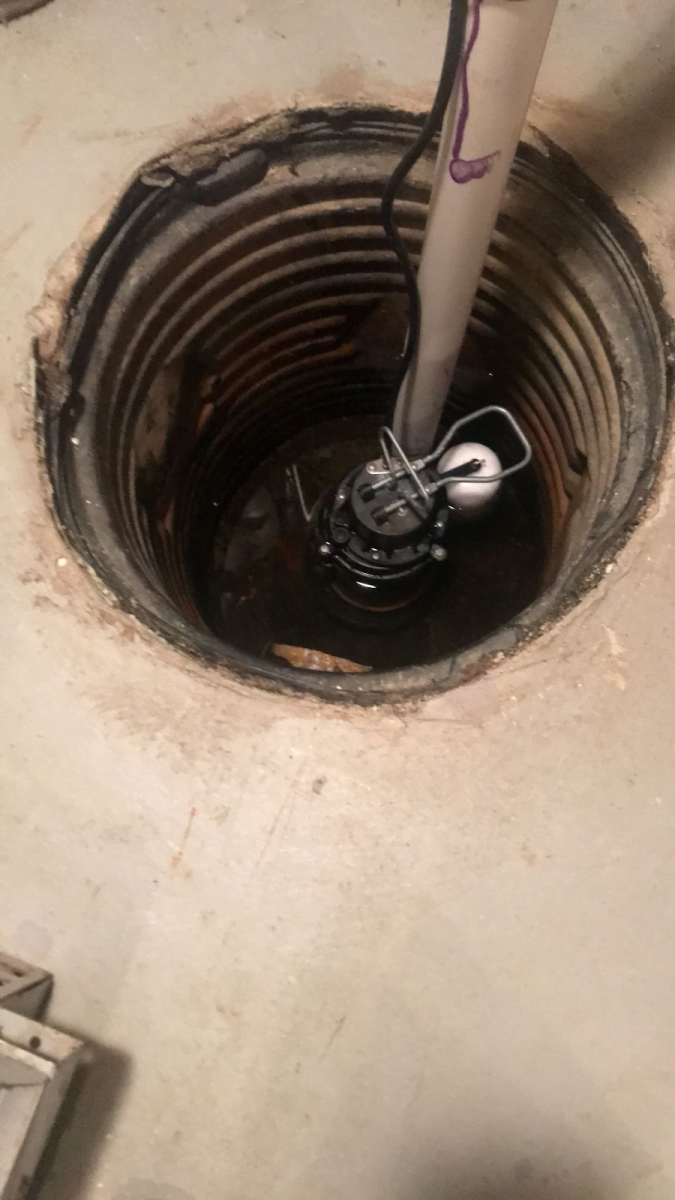
Sump pumps can function through a switch system that enables independent activation. However, not all switches operate in the same manner, despite achieving the same outcome. Here are various switch types and their operating methods:
Vertical float switch
The magnetic switch, the vertical float switch, moves along a rod attached to the pump. It turns on the pump as the float rises with the increasing water level and turns off the pump when the float lowers due to a decrease in water level.
Diaphragm switch
The switch works similarly to a diaphragm, bending inward when the pressure increases and outward when it decreases. This type of switch is widely used because it is not prone to get stuck in the on or off position.
Pressure switch
The function of a pressure switch is to detect the level of water pressure and activate the pump accordingly.
Tethered float switch
The pump is linked to a float switch anchored in the basin and moves up and down with the water level. As soon as the switch reaches its highest level, it triggers an electrical message that activates the pump. If the switch cannot float, the pump must stop functioning through an electrical signal if the switch cannot float.
Electronic switch
Instead of relying on a float, the electronic switch detects the basin’s water pressure. When the water level increases, the pressure increases, triggering the probes and activating the pump.
What Are The Benefits Of Using Sump Pumps?
Let’s look at the advantages sump pumps offer, in addition to guaranteeing proper drainage during bad weather:
- Prevents basement flooding.
- Protects from sewage backups.
- It keeps your home safe from mold and mild dew.
- It provides a reduction in home humidity.
- Reduces heating costs with the continuous drainage system.
- Prevents termite and insect infestations.
- Protects against electrical fires and fire damage.
Sump pumps offer a lot of benefits for homeowners. Your home must have a sump pump to keep its drainage system functioning, and your home needs one if you live in an area prone to flooding.
How Does A Sump Pump Work?

Before getting into the details and learning how sump pumps work, let’s understand their essential components.
The sump pump motor, discharge pipe, float switch, check valve, and battery backup system are major parts of sump pumps.
You must install a sump pump, if your house has a basement. A sump pump water discharge system helps to regulate and control the water in the basement.
The area’s lowest point is where the water rushes when it rains heavily outside. In the case of flooding, the basement’s water level rises. The foundation walls are harmed when the water spills into the sump pit. And a sump pump is required to prevent this situation.
The sump pump activates when water builds up in the sump pit due to a strong rainstorm or for any other reason.
The sump pump’s float switch detects the presence of water in the home’s basement.
The pump’s controller receives an electric signal from the sensor. This turns on the pump.
The sump pump draws water in by producing a vacuum inside the sump pit using its suction line. The pump then begins to run. An electric motor powers the process.
The water then passes via the drain pipe and into the discharge pipe.
The check valve automatically closes when the pump ceases to operate. The pump will then continue, starting another cycle. As a result, the water can only flow in one direction and cannot move back into the sump pit.
Draining Of Water From A Sump Pump
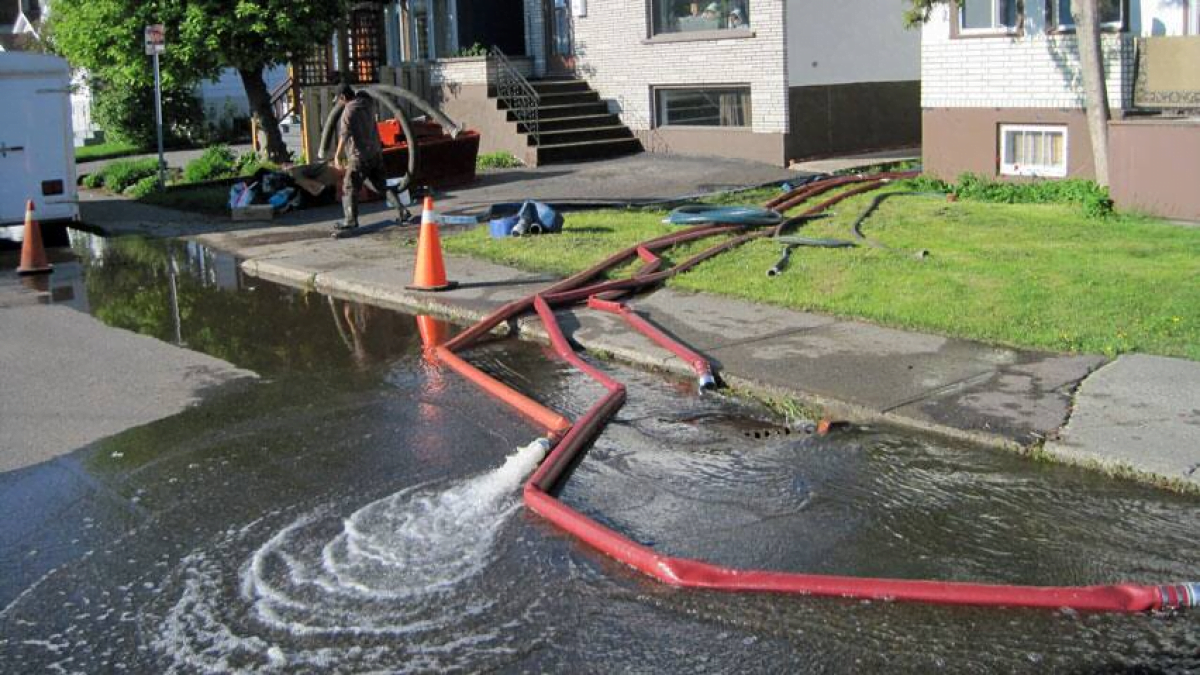
The sump pump should drain the water from your pump to a specific location, such as a pond, dry well, or community drain. You should avoid setting up the drainage point in a place that will cause the water to flow back toward your home.
Maintain a distance of 10 to 20 feet between your pup and the base of your house. Certain municipalities have regulations regarding the location of your sump pump’s discharge. Therefore verify with your local authorities.
When selecting a sump pump, add a longer drainage hose and choose a higher horsepower model to compensate for deficiencies.
Mistakes To Avoid While Using Sump Pumps
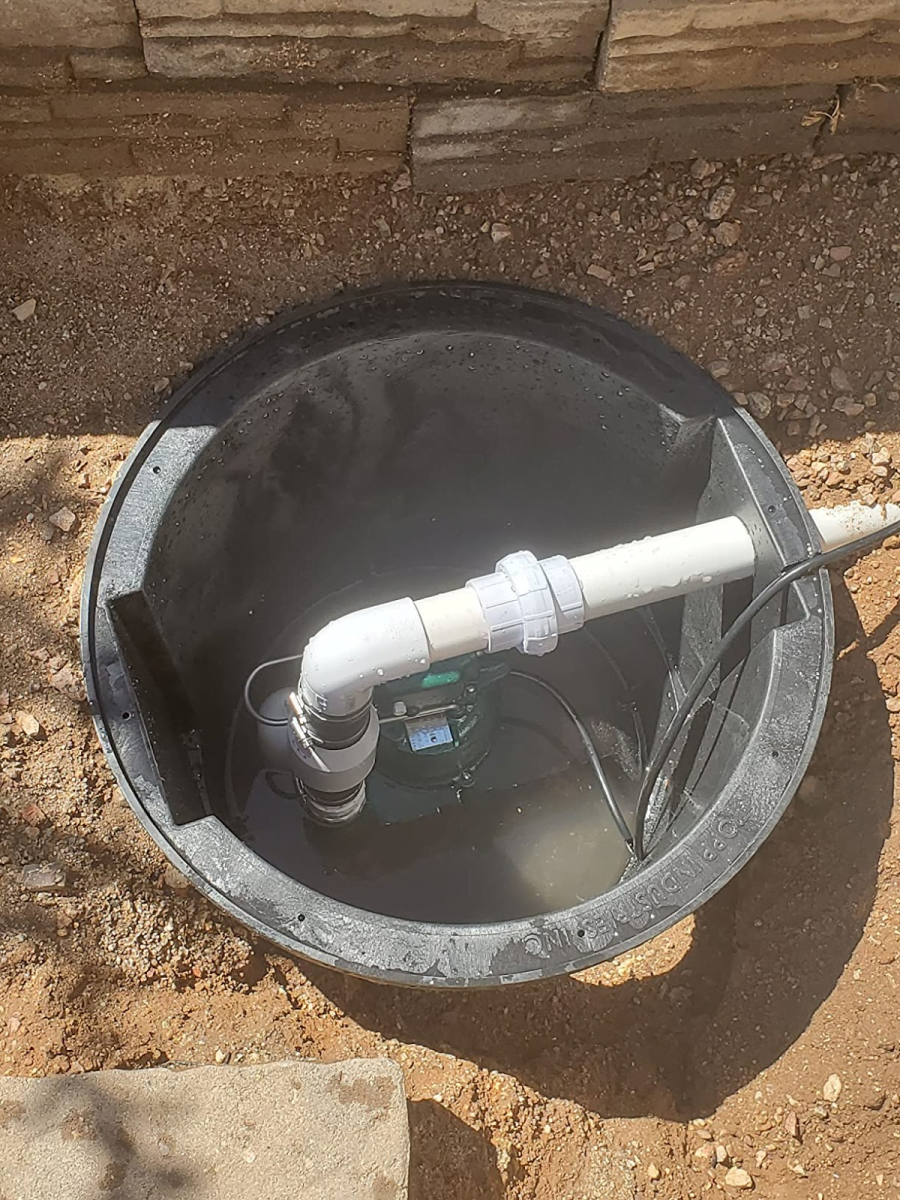
Here are some tips to avoid while using sump pumps.
Failing to test your sump pump
Test your sump pump system at least once a year to see whether it needs repair or replacement.
To test, get a five-gallon bucket and steadily pour water into the sump basin until your pressure or float switch activates to test the pump.
Note: You might need to buy and install a new pump if the water doesn’t drain and run.
Unplugging the pump
Unplugging sump pumps is a common issue, especially in basements used for more than just storage. It is usual to remove the pump’s power and never plug it back in if an outlet is needed.
So, the best way to avoid unplugging your pump is to plan the use of your basement accordingly.
Not Undertaking Preventative Maintenance.
A sump pump system requires maintenance checks. Debris in the pump, defective wiring, or even broken pipes can cause multiple issues. Early detection of these problems can stop bigger and more expensive problems.
Sump pumps are essential to preventing many hazards, such as basement flooding and molds, by keeping moisture out of your building. So be careful to take good care of and maintain your sump pumps so that you may continue to maintain a good home and have a stress-free life.
Life Expectancy Of A Sump Pump
You should be aware of the life expectancy of your sump pump. Mainly, all sump pumps last around 10 years. However, the lifespan of a sump pump depends on the water cleanliness and acidity of the water that enters the pump.
How To Maintain A Sump Pump?

Sump pumps require routine maintenance. The pump can become clogged with dirt, sand, and other material, limiting its capability during an emergency. I advise servicing your sump pump every six months since most homeowners don’t realize their pump isn’t operating until it’s too late.
Here are 5 few steps you may take to ensure the effectiveness of your pump.
1. The pump should be standing upright. The motor’s vibration frequently causes pumps to shift. The float arm may get stuck if the pump is not seated straight.
2. Check the GFCI outlet to ensure it’s plugged in, and the cord is in good condition. The GFCI breaker may trip if moisture is present, causing the sump pump to shut down. If so, you’ll need to reset it.
3. Remove any debris and disconnect the check valve.
4. Examine the battery in the backup pump. If possible, attach a maintenance-free battery to your backup. Use a multimeter to check the battery’s charge periodically.
5. Test the pump by pouring water into the pit. Go outside and check to see if water flows through the output line. The water should rapidly drain away and begin automatically. If not, have a professional service.
Pay attention to these tips and use them to increase the effectiveness of your sump pumps.
Cost Of A Sump Pump
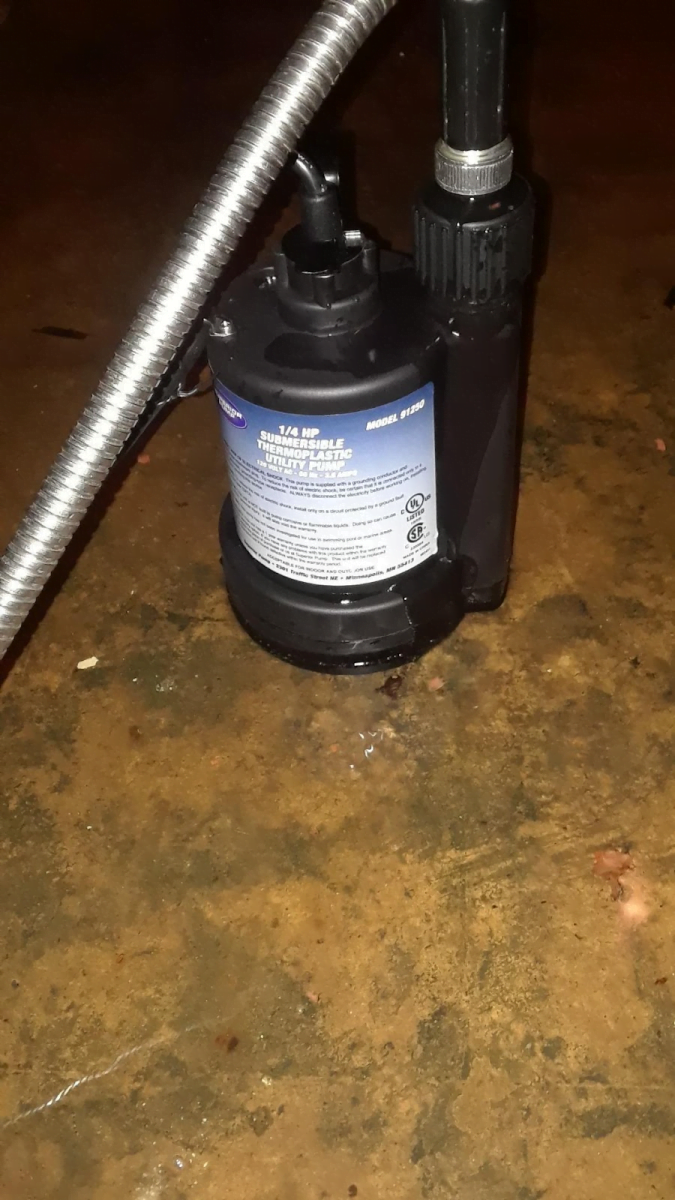
A new sump pump costs between $200 and $600. Of course, that depends on the size and type; pedestal pumps, for instance, are far less expensive than combination pumps.
The price of the pump itself is only one aspect of the sump pump purchase puzzle; installation is also required. Installation can be expensive if your basement doesn’t already have a sump pit. If your basement floor is concrete, budget at least $2,000 to $5,000 for digging a new sump pit and installing a pump.
Things That Affect The Sump Pump Cost
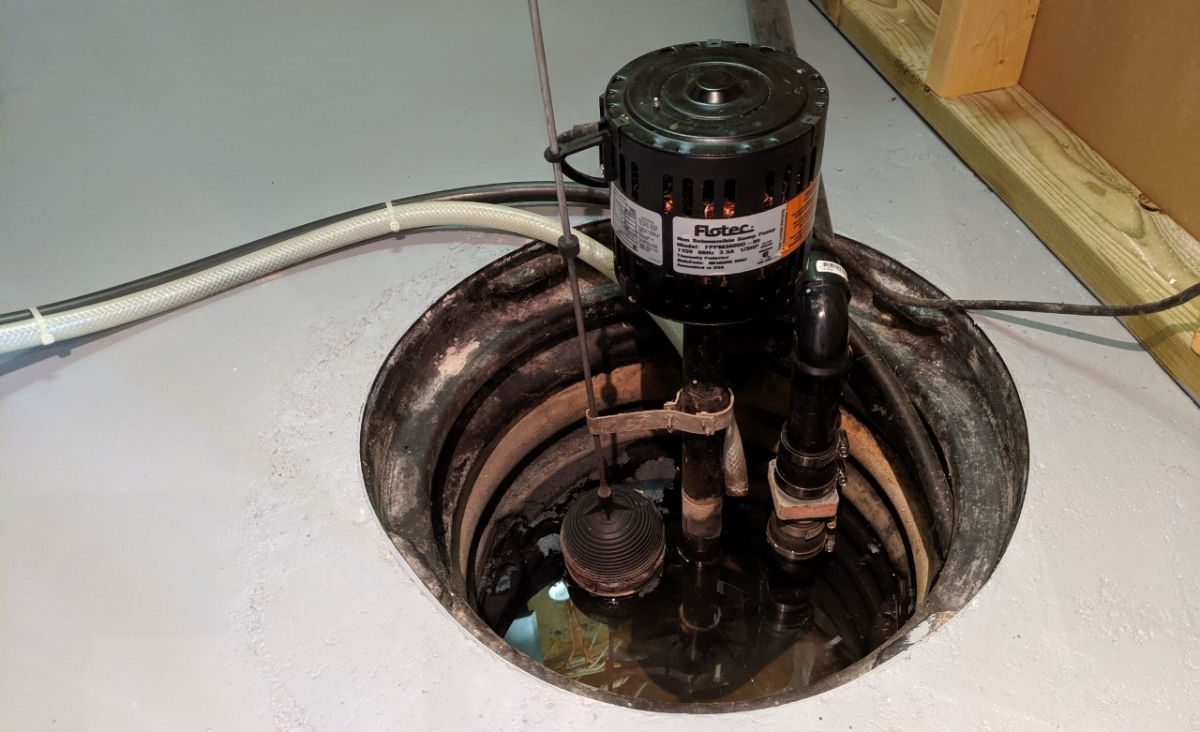
Here are the things that affect the sump pump cost:
Material Of The Basement
The installation cost may depend on the condition of the basement floor. If the floor is made of cement or concrete, it will require removal at the lowest point where the pump will get installed. The cost of labor will increase with the thickness of the cement.
Cost Of A Permit
Plan and take into account the location in determining the permit cost. Additionally, consult the guidelines to include all necessary project expenses.
Kind Of Sump Pump
The sump pump cost for your residence depends on the type you choose. Various factors, such as the power, dimensions, materials used, and add-ons like a backup battery or a particular switch type, can all affect the cost.
Drainage
When a drainage point is mandated at a certain distance from your residence, the installation costs may increase due to the requirement of yard drainage lines or extension hoses. These additional components can also pose a risk to your yard and have the potential to freeze during the winter months.
Licensed Professional
You can install a sump pump by yourself if you have sufficient knowledge. This will reduce your costs. However, hire a licensed professional if you are still determining. It is more cost-effective to install the pump than to deal with the expenses of a flooded basement.
Should You Choose Professional or DIY Installation?
If you have proper knowledge and experience installing sump pumps, you can install a sump pump on your own. Be aware that if the sump pump isn’t installed correctly, then the cost of water damage will be far more than hiring a professional.
If you install the sump pump on your own, you need to make the pit or basin, connect it to the suitable hoses and pipes and test the machine. It generally takes a day to finish the installation process.
If you don’t have any knowledge of installing the sump pump, it is best to hire a professional. Professional charges somewhere around $600-1,800, with the labor cost. These charges also depend on where the sump pump is installed.
What’s The Right Time To Replace Your Sump Pump
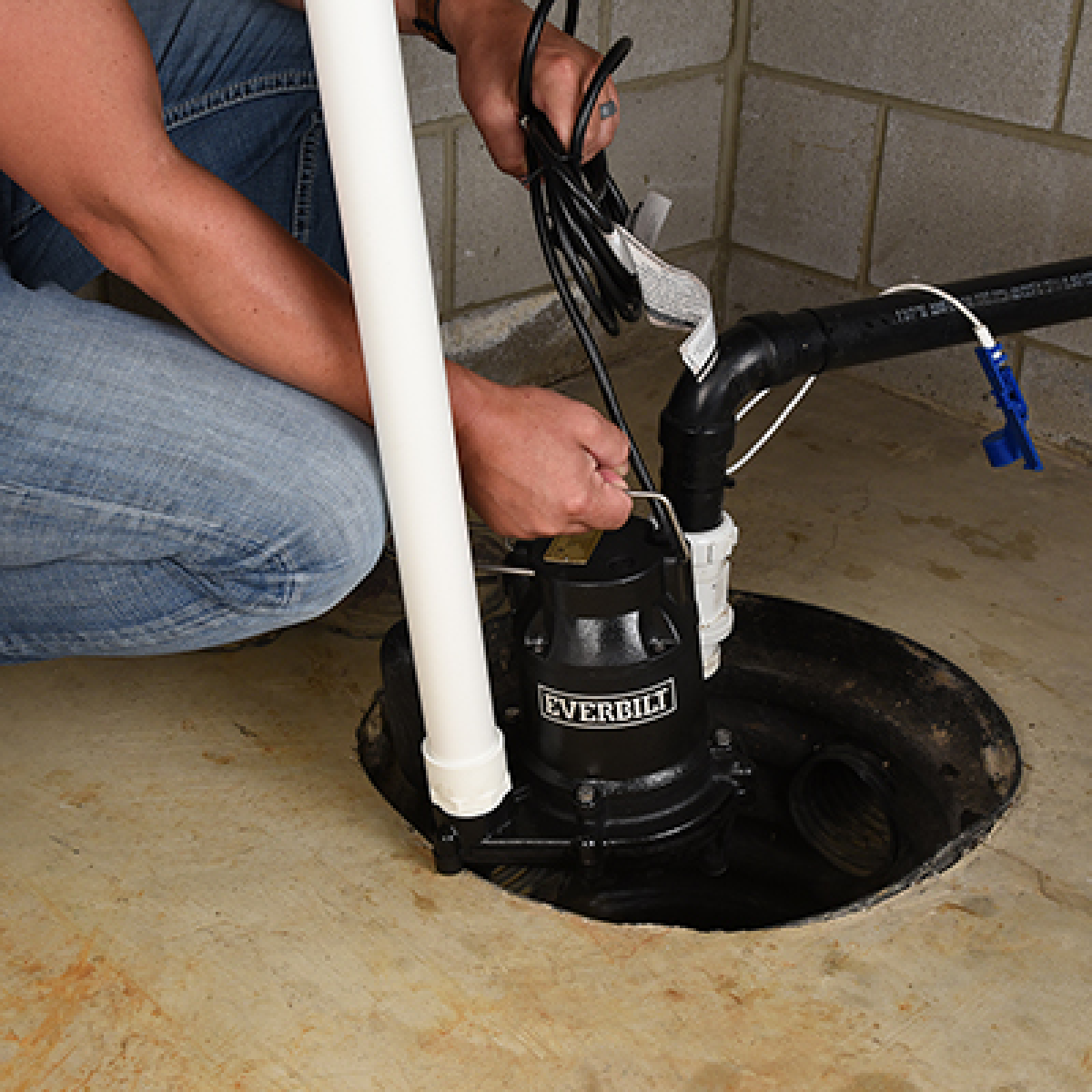
Here are the signs that alert you to replace your sump pump:
Running pump
When a pump runs continuously, it means it will end soon or has already reached that point.
It’s rare for a sump pump to cycle continuously. This could also be due to the wrong pump size or obstructed float switch. If the float switch is stuck, the pump will run non-stop, resulting in excessive strain on the motor and causing it to fail prematurely, before its intended lifespan.
If you notice your pump running continuously, determine the underlying problem to prevent complete damage.
Old pump
Even if you have a high-quality sump pump, it will require replacement every 10 years. Although specific pumps may have a longer lifespan, they are more prone to issues after reaching this age limit.
If you want to reduce the chances of water damage and costly repairs at home, replace the pump every decade.
Noisy pump
Hearing loud sounds emanating from the sump pump’s pit could indicate a significant issue with the pump. When the pump is nearing the end of its useful life, the motor will begin to produce a roaring noise as it works to remove water from your residence.
When a motor produces loud noises such as rattling, it is about to fail, or the pump wasn’t installed correctly from the beginning. To alleviate the noise, cover the pipes with insulation. Alternatively, you can seek the assistance of a plumber to redirect the discharge pipe more efficiently.
If the impeller of the sump pump is clogged with debris, it can result in loud noise, indicating that it is damaged.
Uneven cycling
If the float valve is not placed at the right height in the basin, it can cause additional strain on the pump. If the pump gets triggered by only a few inches of water, it will repeatedly switch on and off.
When your basin pump takes enough time to empty the water, it might be unable to perform its designated function.
How Much Does It Cost To Replace A Sump Pump?
The price is significantly lower if you already have a sump pit and are only changing the pump. If you feel confident installing it yourself, you won’t need to pay more than the new pump’s price, which ranges from $200 to $600.
The standard cost, which includes the cost of an average pump, is roughly $500 if you have someone else install your replacement sump pump.
Is A Sump Pump A Necessity?

Some homes risk flooding due to higher-than-usual rainfall or basements constructed below the water level. This requires the installation of sump pumps. The absence of sump pumps can lead to severe damage to your property & pose a threat to your well-being.
Even if your home does not flood, moisture can cause mold, which increases the risk of allergic reactions and asthma complications. If you don’t have a method to move water outside, it will accumulate & eventually flood or dampen your basement.
Conclusion: Sump Pump
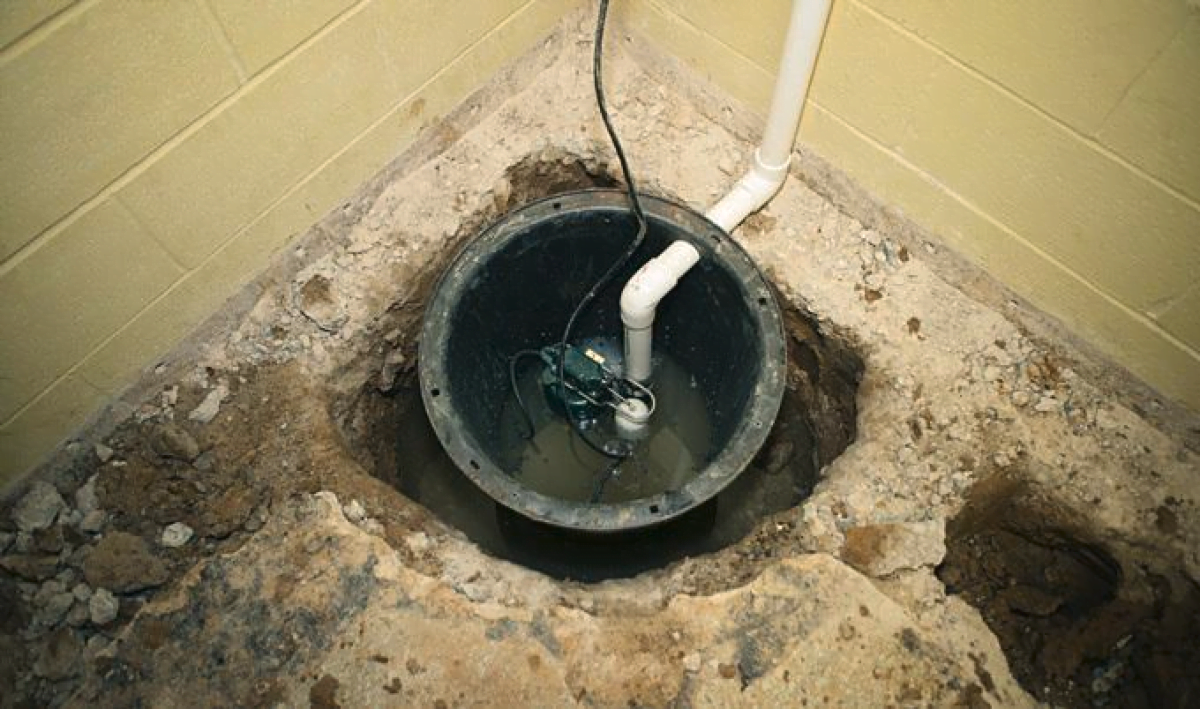
After reading this article, you ought to completely understand sump pumps, including their benefits, types, and workings.
As mentioned above, installing a sump pump can protect your home from flooding and reduce the possibility of damage and repairs.
The lowest point of the house, such as the basement or crawl space, is where the sump pump is typically installed. Although a sump pump may appear little and unassuming, it ultimately helps you resolve your concerns and save money.
FAQs On Sump Pump
1. Do all houses need a sump pump?
Sump pumps do not have to be installed in every home. However, you should consider installing one if you reside in a flood plain.
2. How much does it cost to replace a sump pump?
Sump pumps typically cost between $600 and $2000 to replace. The cost is based on the size, location, and whether it needs to be replaced because of damage.
3. Do sump pumps use a lot of electricity?
During the rainy spring months, sump pumps can consume up to 10 kWh per month, or $30 per month, in electricity. Make sure your circuits aren’t overloaded, or the breaker might trip.
4. What is the lifespan of a sump pump?
Sump pumps typically have a lifespan of ten years; however, this depends on the water’s acidity and cleanliness of the water that enters the pump.
5. What does a sump pump actually do?
Sump pumps take extra water that drains into your home and pumps it outside. The sump pump is located at the sump pit.
6. Is a sump pump under a house really necessary?
If an individual resides in an area that is prone to floods, then a sump pump is essential under a house.
7. What’s the negatives of a sump pump?
Here are the negatives of sump pumps:
You may get exposure to hazardous radon
Electricity requirement
Read More
Sump Pump Running No Rain – How To Fix It?
Sump Pump Tripping Breaker: What You Need to Know?
Sump Pump Installation: Complete 9-Step Process For Beginners



